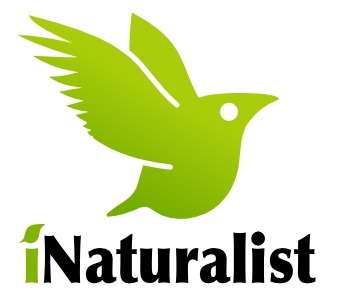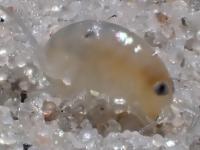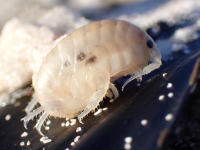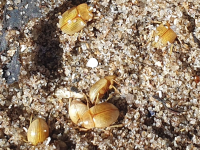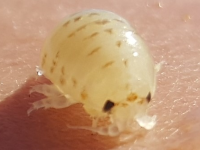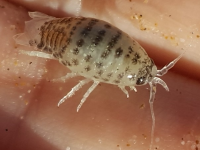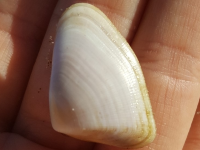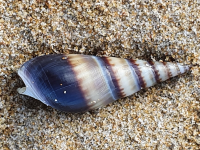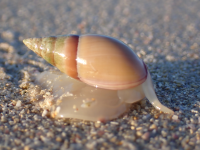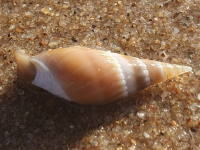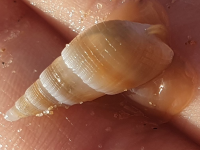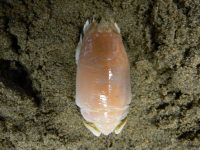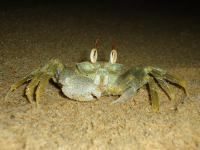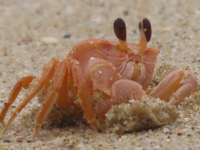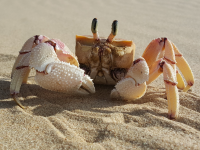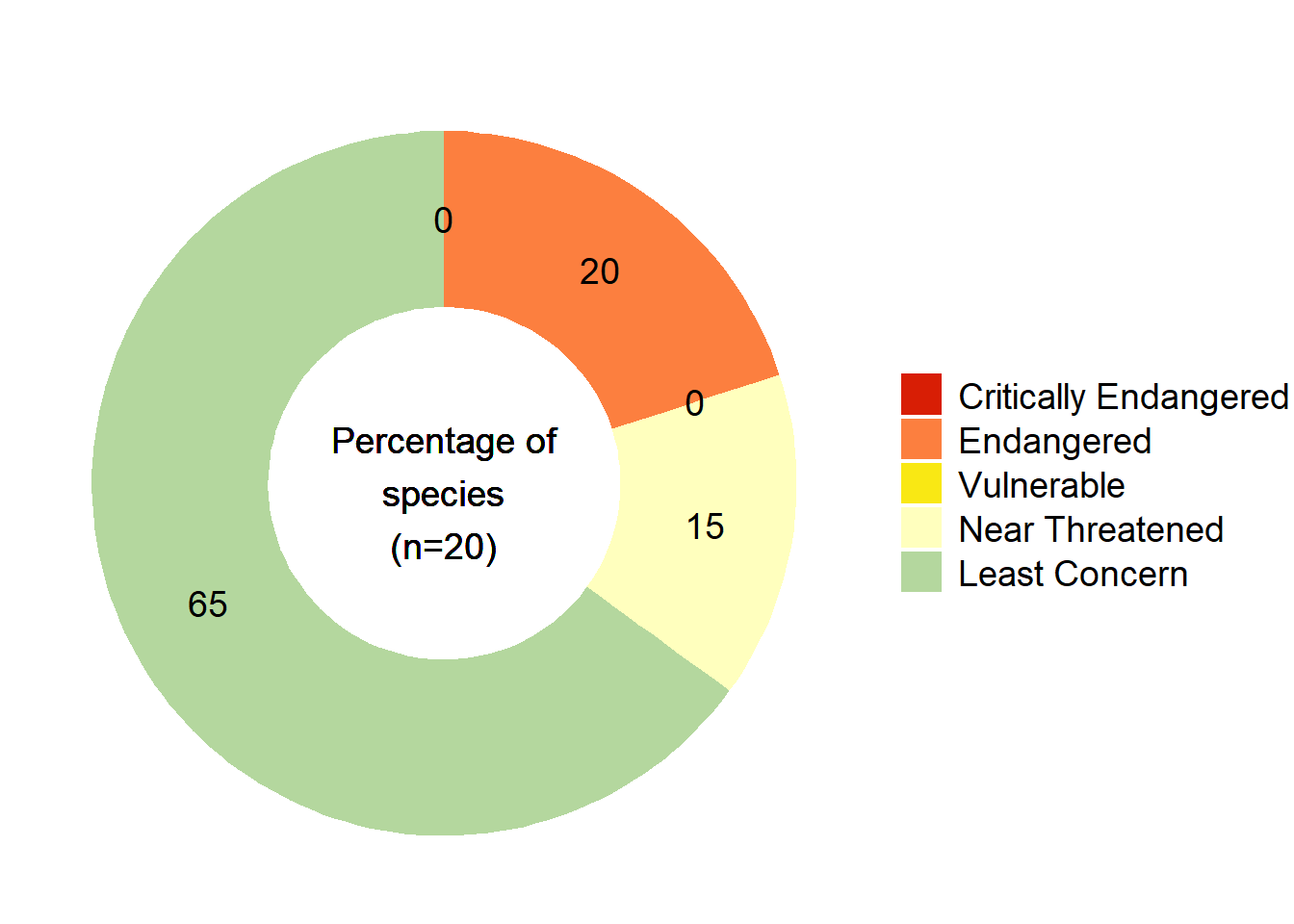
of 20 beach invertebrates are
Taxa of Conservation Concern
beach invertebrates assessed as
Endangered
Summary
Endemic coastal invertebrates living at the dune-beach interface are threatened by mining, coastal development, artificial nighttime lights, and wrack harvesting. In addition, South Africa’s only commercially harvested beach clam is rapidly declining in abundance. The littoral active zone (connected dune-beach-surf zone) needs to be kept intact and restored, and sustainable harvesting of beach-associated resources is essential for conserving this unique coastal biodiversity.
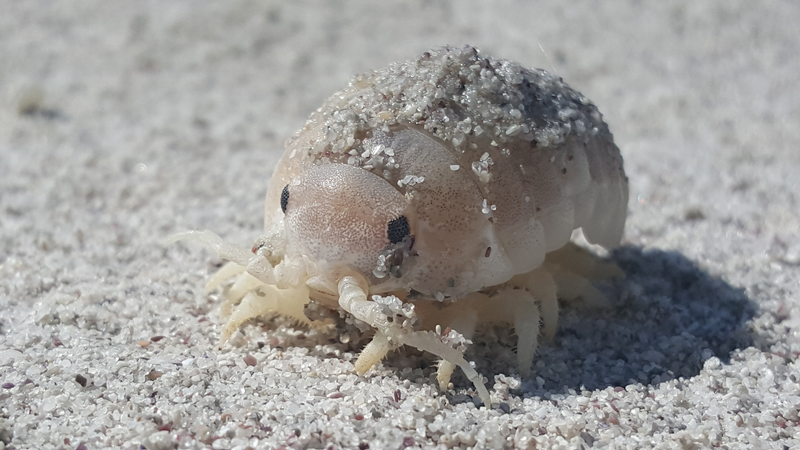
Preamble
This is the first time in the National Biodiversity Assessments that there is a Species section in the Coast Assessment. For now, we are starting with IUCN Red List assessments of sandy beach invertebrates, but will expand this over time to include more coastal species, including those already assessed in the terrestrial, estuarine and marine realms. This will allow more comprehensive analyses of species to determine, for example, whether coastal species are more threatened than non-coastal species as a result of the disproportionate pressures on coastal ecosystems.
First assessments of sandy beach species
Sandy beach invertebrates have been assessed for the first time globally using the IUCN Red List Criteria and Categories1. Data on species occurrences were compiled from GBIF, iNaturalist (Box 1), and from field sampling2 to determine the area of occupancy (AOO1) and extent of occurrence (EOO2) of each of the species using the GeoCAT tool. These metrics, data from the literature, and expert knowledge were used to assess 20 beach species. The species assessed include beach clams, plough shells, ghost crabs, amphipods (sandhoppers and others), isopods (pillbugs and others) and beetles (Box 2). See the Technical documentation for links to the detailed methodology and R code.
Species assessment results
Most of the species that were assessed are endemic to South Africa, with some species’ distributions extending into Namibia or Mozambique. Only the four crabs and Latona madagascariensis have broader distributions.
A third (35%) of the species assessed are threatened or Near Threatened (NT) (Figure 1). The species that are most at risk are the Endangered white mussels (Donax serra), pillbugs (Tylos capensis and Tylos granulatus) and beach ground beetle (Acanthoscelis ruficornis). This means 1 in 5 beach species is assessed as Endangered.
View the species in the image gallery below (Box 2), and click on the pictures to view the IUCN Red List of Species assessment for each taxon.

Key pressures on threatened species
Read more details about each of the pressures mentioned below on the Coastal Pressures and Ecological Condition page.
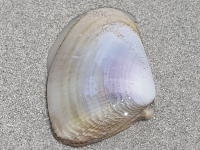
© Linda Harris (CC-BY-NC-ND)
Donax serra (white mussel) is a beach clam that is endemic to Namibia and South Africa. There is evidence of population declines by 50-80% based on commercial catch and catch per unit effort (CPUE) data in South Africa over the past 10 years, disappearance of the species at sites that have been mined in Namibia, and anecdotal evidence of severe declines and/or disappearance of the species at certain beaches in South Africa. Harmful algal blooms can also cause mass mortalities. The overall population is suspected to have declined by over 50% in the past decade and it is therefore assessed as Endangered under Criterion A2.
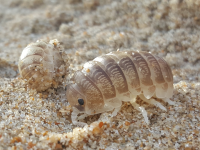
© Linda Harris (CC-BY-NC-ND)
Tylos capensis (Cape calloused beach pillbug) is endemic to South Africa. It has a limited range and restricted habitat along the South African south coast, with between 9 and 12 locations extant. It is experiencing ongoing loss, degradation and fragmentation of habitat to expanding coastal development and artificial light at night (ALAN), and has been lost from at least four locations, including inside protected areas. This species broods its young, has small broods and limited connectivity, and has been assessed as being severely fragmented based on the IUCN definition. It therefore qualifies as Endangered under Criterion B.

© Linda Harris (CC-BY-NC-ND)
Tylos granulatus (granulated calloused beach pillbug) is restricted to the coast of Namibia and South Africa. It generally occurs in low numbers, and is found in large abundances (hundreds to thousands of individuals) in only a few places. Extirpations have been recorded at the southern end of its range due to coastal development, there are no recent records in the northern part of its range, and it is impacted by mining. Kelp wrack removal takes away an important source of food for this species. Collectively these pressures are causing notable declines in its habitat availability and quality, and declines in the number of mature individuals. This species broods its young, has small broods and limited connectivity, and has been assessed as being severely fragmented based on the IUCN definition. It therefore qualifies as Endangered under Criterion B.
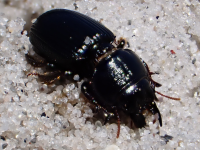
© Linda Harris (CC-BY-NC-ND)
Acanthoscelis ruficornis (beach ground beetle) is a southern African endemic species, found only in the supralittoral habitat on sandy beaches along the west coast of South Africa and Namibia. It burrows in the sand or hides under kelp wrack, feeding on invertebrates associated with wrack. Approximately 80% of its recent (since 2000) range is exposed to mining, coastal development and/or kelp wrack removal. These pressures are causing declines in habitat extent, quality, and population abundance, and there is evidence that the species has been lost from some sites that have been mined. The population is inferred to be severely fragmented, comprising small, isolated subpopulations across its range. It is therefore listed as Endangered under Criterion B.
Technical documentation
Publication
Harris, L.R., Raimondo, D., Sink, K., Holness, S.D., Skowno, A.L., 2025. Sandy beach ecosystem and species red listing highlight priorities for beach conservation and restoration. Estuarine, Coastal and Shelf Science, 324: 109447. https://doi.org/10.1016/j.ecss.2025.109447.
Technical details on the IUCN Red List of Species assessments for sandy beach invertebrates.
Data availability
Git Repository
Code to compile species records from GBIF, iNaturalist, and other records (e.g., from field sampling) stored in csv files. Also available as a pdf in the Supplementary Material of the publicationSpecies red list assessments on the IUCN Red List of Threatened Species
Recommended citation
The publication is the preferred citation for this content, otherwise use:
Harris, L.R. & Raimondo, D. 2025. Species Assessments. National Biodiversity Assessment 2025. South African National Biodiversity Institute. http://nba.sanbi.org.za/.
